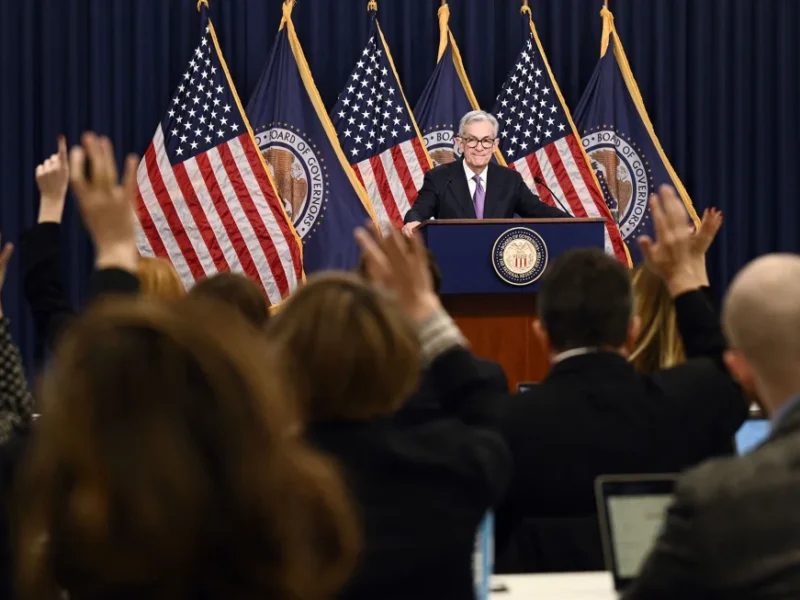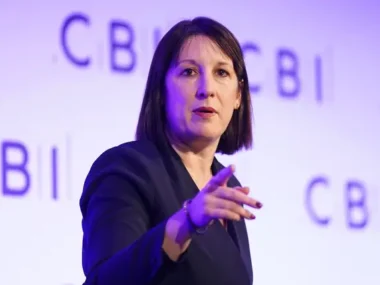The Federal Reserve is set to make its first interest rate decision of the year, but most of Wall Street anticipates no changes. Instead, investors are eagerly awaiting Fed Chair Jerome Powell’s press conference in which he will provide insights into his monetary policy outlook.
Historically, Powell’s guidance has held significant sway over markets. If he hints at impending rate cuts, markets tend to respond positively, while indications of prolonged higher interest rates can lead to stock declines. However, analysts argue that Powell’s influence may not be as substantial as perceived.
Research from Bespoke Investment Group illustrates that the performance of the S&P 500 index and the probability of a rate cut at the March meeting are not closely correlated. Despite the likelihood of a rate cut in March decreasing since late December, the S&P 500 has risen by over 3.5% during the same period.
This decoupling could be attributed to inflation rates approaching the Fed’s 2% target. When inflation falls below 5%, it tends to fade from the headlines, and public concerns shift to other issues like budget deficits or climate change.
The Personal Consumption Expenditures price index, which the Fed uses as its target rate for inflation, showed a 2.6% annual increase in December, coming closer to the central bank’s 2% goal compared to a 5.4% gain the previous year.
Kevin Gordon, a strategist at Charles Schwab, analyzed market data going back to the early 1900s and found that, on average, the S&P 500 increased by 2% between the Fed’s last rate hike and the first cut. However, this average conceals the fact that markets have experienced significant fluctuations during these periods, ranging from 27% lower to 26% higher, with only a 50% success rate of ending higher. When inflation subsides, investors shift their focus to other pressing issues, such as geopolitical conflicts, trade tensions, and economic trends.
Despite all these factors, traders are also paying attention to the resilience of the US economy, characterized by low unemployment, growth in job openings, stronger-than-expected GDP, and continued consumer spending.
In conclusion, many factors are at play, and obsessing over Powell’s words during his Wednesday speech may not be the most valuable use of Wall Street’s time.
The escalating tensions in the Red Sea region have the potential to drive inflation higher.
The recent drone strike that resulted in the deaths of three US service members and injuries to many others in Jordan has heightened concerns on Wall Street about the potential for an escalating conflict in the Middle East.
This Sunday attack marked the first instance of American troops being killed by enemy fire in the Middle East since the beginning of the Gaza war in October. When asked about his response, US President Joe Biden acknowledged that he had made a decision but did not disclose further details.
Although financial markets have largely remained unfazed by the rising tensions, oil prices have experienced an uptick as anticipation grows regarding the US reaction to the attacks.
West Texas Intermediate, the US crude benchmark, rose by $1.04, or 1.35%, reaching $77.82 per barrel on Tuesday. Brent crude also increased by 47 cents, or 0.57%, closing at $82.87.
The conflict in the Middle East, particularly in the Red Sea area, is seen as a potential threat to global trade, according to EY Senior Economist Lydia Boussour. Repeated attacks by Iran-backed Houthi rebels have led many cargo ships to avoid the Suez Canal, which is a significant blow to global trade. The Suez Canal typically handles as much as 15% of global trade and 25%-30% of global container shipments.
This situation increases the risk of inflationary pressures as shipping costs surge, a risk that the International Monetary Fund (IMF) also highlighted in its World Economic Outlook. While it is not anticipated that the Red Sea situation will significantly alter the global inflation and monetary policy outlook for this year, a prolonged conflict with sustained high shipping costs throughout 2024 could contribute up to 0.7 percentage points to global inflation this year, as stated by Boussour.
Microsoft has reported a 33% increase in profits, driven by the success of its artificial intelligence (AI) business.
Microsoft recently joined the exclusive club of companies worth $3 trillion, driven by the AI boom that boosted its stock value. In its latest report, the company revealed a 33% growth in net profit for the final quarter of the year, primarily attributed to its investments in the artificial intelligence sector.
Earnings per share came in at $2.93, surpassing Wall Street’s expectations of $2.79, while revenue increased by 18% compared to the previous year, totaling just over $62 billion.
Microsoft’s CEO, Satya Nadella, stated, “We’ve moved from talking about AI to applying AI at scale. By infusing AI across every layer of our tech stack, we’re winning new customers and helping drive new benefits and productivity gains across every sector.”
As a result, Microsoft’s shares have risen approximately 10% since the beginning of the year, and while they slipped slightly in premarket trading, the company’s AI-focused strategy continues to fuel investor confidence.











